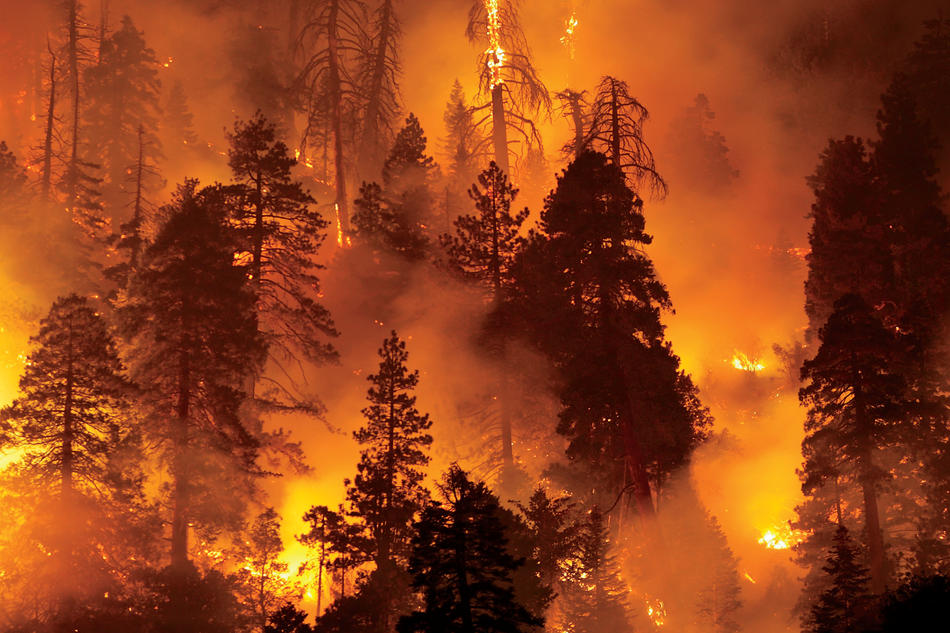Wildfires have been consuming forests in the western US at a devastating pace, with the amount of land burned annually increasing ninefold between 1984 and 2015. Last year alone, 1.5 million acres were destroyed by fire — an area half the size of Connecticut.
Now, a new study has confirmed what many experts have long suspected: that human-induced climate change is fueling the infernos.
“Climate change is the single most important factor driving the trend, being responsible for nearly half the total increase in fire activity,” says A. Park Williams, a climatologist at Columbia’s Lamont-Doherty Earth Observatory, who coauthored the study with John Abatzoglou of the University of Idaho. “Since 1984, it has led to the loss of about twenty-four million acres, whereas fourteen million acres would have burned otherwise.”
Average temperatures in the western United States have gone up about 2.5 degrees Fahrenheit over the last century, and as the air warms it is sucking the moisture out of trees, plants, dead vegetation, and soil at a faster rate, making them more susceptible to fire.
Williams and Abatzoglou calculated the effect that this drying process has had on fires by comparing the aridity of forests in any given year — based on historical drought indexes — to the amount of land that burned. They found a direct relationship, with the worst fires occurring in the driest years.
“We then worked backward, using the latest climate models, to determine how much of each year’s aridity was likely caused by anthropogenic climate change,” says Williams. The scientists say that several other factors are driving the intensity and scope of US forest fires. One is natural climate variation. Most notably, cyclical changes in oceanic currents have steered rain and snowstorms away from the western US in recent decades, exacerbating drought conditions.
Williams and Abatzoglou say that their study may actually understate the impact that human-induced climate change is having on forest fires, because it does not account for some factors that could be offshoots of global warming. These include the millions of trees killed in the US in recent years by warm-weather-loving beetles, and declines in springtime soil moisture brought on by earlier snowmelt. There is also evidence that lightning — which causes many forest fires — may increase with warming.
In the coming years, the scientists say, fires in the western US will continue to intensify. “The magnitude of fires that we’re seeing now is very different from what we saw in the 1980s,” says Williams. “And in the 2030s, fires will probably dwarf those that we’re seeing today.”



